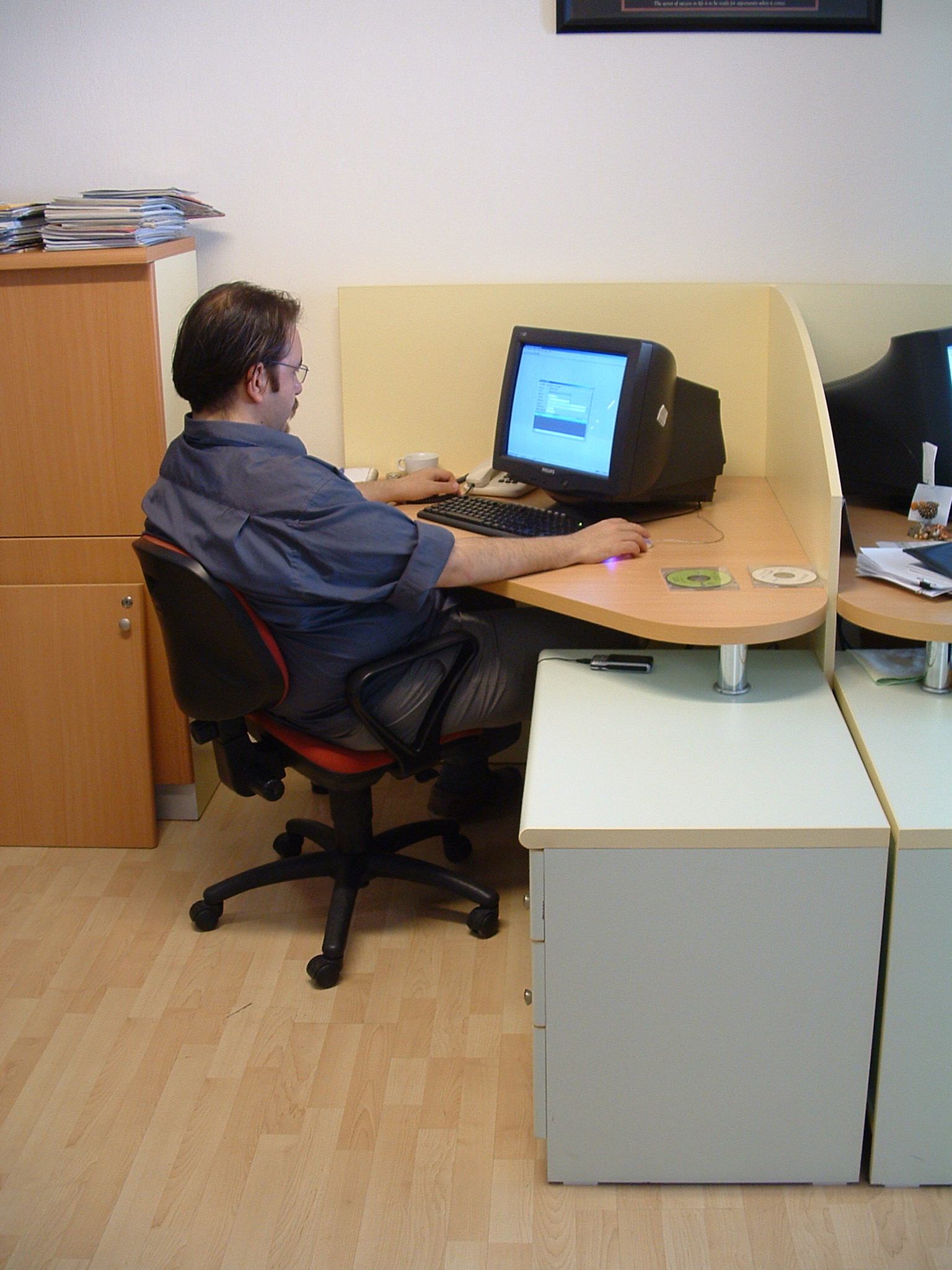Desk posture protocols are plentiful. There are many rules to follow when sitting like a proper human being.
- Knees in line with the toes
- Wrists in line with the elbows
- Keep the neck aligned with the spine
- Don’t slouch
- Shoulders back
What other ones do you teach people or use for yourself? Ergonomics are sometimes foreign to people and hard to remember. Plus, we need to be asking these questions…
- Is “good posture” really the same for everyone?
- Can we all follow the same rules?
I’m not so sure. I think body position is personal and unique for each individual. What about you? Do protocols leave you scratching your head sometimes?
Ergonomic rules and protocols are a good starting place for most people. They’re like guard rails on a windy road. They keep a person in line, generally. You still have to drive the car and steer it properly to avoid an accident. Some people need a deeper understanding of their body to make positive changes.
I love teaching anatomy and biomechanics to fitness trainers and clients. It’s fun to see the eyes go wide as people connect with their own body more deeply. “Wow! I can feel that bone move!” is one statement I hear often when I show people their greater trochanter for the first time.
Pelvic Tilt
This is the foundation for good posture, especially when sitting in a chair. Helping people find their neutral pelvic position whether sitting in a chair, standing for a squat or lying down to do abdominal exercises is the key to proper form. The pelvis is the center point of the body and has a big impact on the spine in most daily activities and exercises.
Think of the hips as a bucket. Put your hands on your iliac crests. Slowly tilt forward and backward. Take note of what happens in your spine, your legs, and your neck. Instead of looking for the perfect position according to a picture in a book, find the position that allows the other joints in your body to feel aligned and comfortable. It’s different for everyone and not something that can be learned from a diagram.
Anterior Tilt
Do you remember the muscles that shorten in this position? Psoas Major, Iliacus, Rectus Femoris, Quadratus lumborum, Multifidus lumborum, Iliocostalis lumborum are a few. Knowing anatomy and feeling these muscles move the body into position is the best way to create awareness for yourself and clients.
When I teach people about how to sit in a chair properly, this is where I start. I show them the muscle attachments on themselves and have them feel the movement. It helps people understand why their body aches after sitting for long periods of time. When these muscles are shortened, they get tight and struggle to lengthen.
Posterior Tilt
Okay, it’s your turn…can you name a few of these muscles before I tell you what they are? Biceps Femoris, Semimembranosus, Semitendonosus, Rectus Abdominus, Pyramidalis… I’ve found great benefit in getting the hamstrings active while sitting for long periods of time, to alleviate low back pain in my own body. This has also worked for several clients.
Try pressing your heels into the floor while sitting and see if you can feel the hamstrings, especially at the ischial tuberosity (butt bone) side. Also try tilting the pelvis and hone in on that area. When you engage the hamstrings, the pelvis tilts slightly and you might be able to feel a subtle stretch through the sacrum. Next time you feel sciatica coming on, see if this helps.
Solutions
My hamstring trick works for me and I only found it by knowing anatomy and experimenting with my own body while experiencing discomfort. Then, I taught it to others and found it worked for certain people. Knowing anatomy and mechanics is the only way I know to find answers to the endless questions clients ask. It’s how I figure out what’s happening during uncomfortable positions or exercises.
I encourage you to learn the attachments of all the muscles in your body so that you can be a better coach and also help yourself when muscle discomfort arises. You’re a personal trainer after all! Every move and exercise starts with the muscles.
Action Time
Close your eyes and do some pelvic tilts. Place your hands on your hip bones and feel what happens. Take note of what you feel all the way up your spine and down to the tips of your toes. Go slow and take your time, checking in with each joint. Try this activity with your clients this week. They might struggle to feel anything the first time they do it, but repeat it once in a while and they will get the hang of it. This is especially helpful for those who work desk jobs. At a minimum, they will feel more relaxed afterward.
Beverly Hosford, MA teaches anatomy and body awareness using a skeleton named Andy, balloons, play-doh, ribbons, guided visualizations, and corrective exercises. She is an instructor, author, and a business coach for fitness professionals. Learn how to help your clients sleep better with in Bev's NFPT Sleep Coach Program and dive deeper into anatomy in her NFPT Fundamentals of Anatomy Course.

